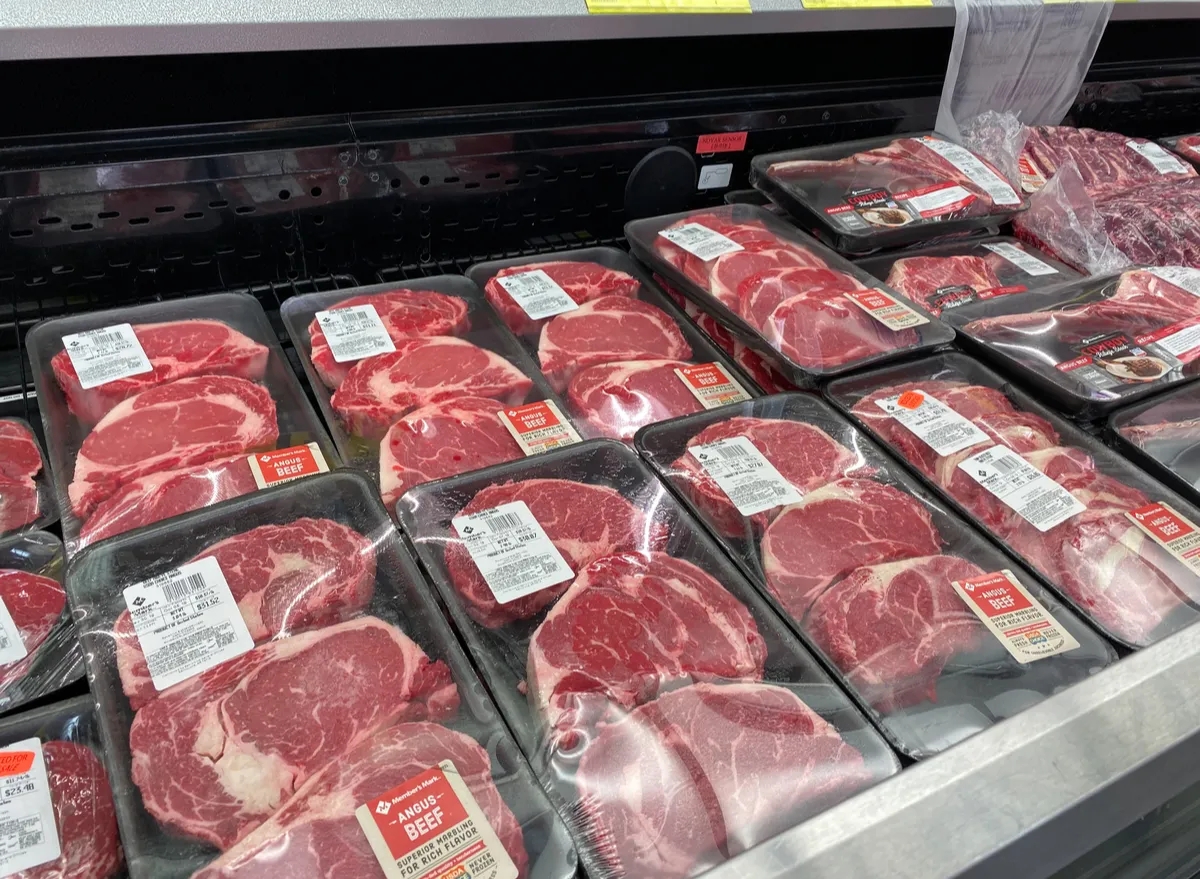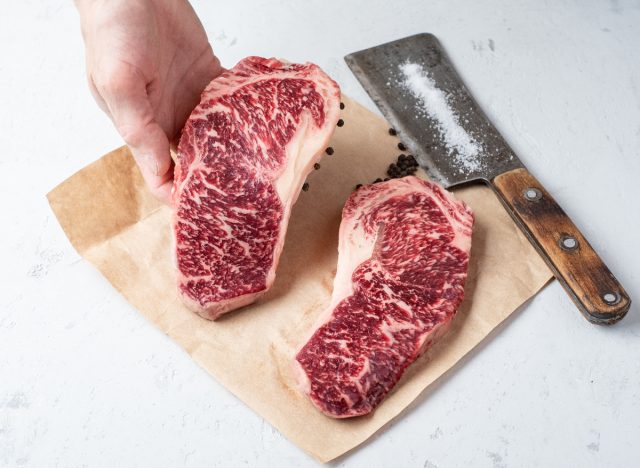How To Choose the Best Steak at the Grocery Store, According to Experts

In the vastness of the grocery store, the untrained eye can quickly become lost in the variety. Dozens of options and brands to choose from.
But by far the most intimidating aisle of all is the meat aisle, especially if you don’t know how to navigate it. Here are some solid pieces of advice from expert butchers on how to pick the absolute best cuts of meat from whatever’s available at your local grocer.
Look for the right kind of fat

Brad Feickert is the owner and general manager of SOKO Butchery in Takoma Park, Md. After a long career as a chef spanning multiple continents and over 15 years, Feickert has found a home in Takoma Park, operating SOKO as both a butcher shop and a restaurant with an emphasis on high-quality and well-sourced ingredients. According to him, the secret to choosing the best meat is in the marbling and its origin.
“Really look at the marbling,” he says. “The consistency and quality of the fat throughout the fibers of the meat is going to determine how good your steak is.”
Marbling is the presence of white flecks of fat throughout the muscle of the meat. This is different from gristle, which is hard, less desirable fat that can run through the steak itself.
“You can feel gristle if you actually pick up a piece of packaged meat and just feel it with your hands. Marbled fat is going to feel like nothing, it’s going to be a part of the muscle itself, but gristle is going to be hard, lumpy fat with a white sheen to it. Gristle is less of a problem with a ribeye or a strip, but when you start to get down to parts of the cow that do a lot of walking, like the sirloin, that gristle is going to become an issue.”
If you look at the best steaks in the world, like A5 Wagyu, the reason that steak is so desirable is the quality and consistency of the marbling throughout. You can see the beautiful flecks of white intermixed with the muscle of the meat, creating a beautiful harmony. Gristle, on the other hand, isn’t going to cook down, isn’t going to impart much flavor, and you’ll be left with an inedible chunk of weird, chewy fat on your plate. You don’t want to eat the fat, you just want it to be a part of what you’re eating.
Local is best
The other reason Wagyu is the best steak in the world is because of how the cows are treated.
“You want meat that’s been sourced from cows who are treated well and treated with care,” said Feickert. “The cows have to be moved around, exercised, fed well. When you buy at the grocery store, it’s a gamble, because a lot of chains don’t make it clear where their meat comes from. If you’re invested in what you put in your body, you want to know where your meat is sourced.”
Things like mass cattle farming are making it more difficult to find quality steaks in America, so if you can afford it, invest in supporting your local butcher the next time you want a nice, juicy steak. If not, be sure to keep an eye on that marbling.
Bryan Hickman is a fifth-generation butcher, and owner of Hickman’s Meat Market, which operates two locations in Delaware. The Hickman family has served Rehoboth Beach for over 22 years, with Bryan taking the helm from his father seven years ago. Much like Feickert, Hickman emphasized the importance of marbling and sourcing of meat.
“The funny thing is that good meat is pretty much the opposite of what people imagine,” he says. “I can pull out a tray, and unless somebody knows what they’re looking for they’ll almost always go towards the ones that I wouldn’t personally choose.”
“I think the best thing to look out for is fat, you want a lot of good fat in your steak, it’s not the same as gristle. A lot of the time, the ones with gristle are the most beautiful ones to look at because they’re bright red with fat around the outside. They look very appealing but those are the ones that will have a little more of a chew to them. Marbling is what renders down and gives you good flavor in that steak.”
What about ground beef?
Ground beef may be the most common item in American cuisine with the least thought put into it. Mass-produced ground beef is a what’s what of weird, undesirable parts of the cow that can’t be sold at grocery store counters. If the grocery store doesn’t want you to buy it as a whole, why would you put it in your body ground up? That’s why both Feickert and Hickman recommend making your own ground beef the next time you want to grill some burgers.
“If you’re not going to a butcher and you can get the same cuts that we would use, like top butt sirloin, you’re going to get a higher quality ground beef if you grind it yourself,” said Hickman, “The problem with grocery store ground beef is that they’re grinding beef to utilize waste, which means there’s going to be a lot of gristle and chew in your bite. If you want a high-quality burger, either visit your local butcher or grind your own beef.”
Feickert dry-ages all his steaks before grinding them up and has produced a delicious smash burger made with dry-aged 80/20 ground beef. And you can do the same. All you need to do to grind your own beef is cut it into little pieces and freeze it alongside the blade of your food processor for about 2 hours. Then, place everything in there and grind it on the pulse setting until you have ground beef. This will allow you to both control the cut of meat you’re using and the fat content you desire. You can do the same for turkey and chicken as well.
Now, not all of us can afford a whole steak, or have the time to grind our own meat, and sometimes we just want a burger. So, when buying ground beef, look for 80/20 ground beef. This is the ratio of lean meat to fat, which is the great thing about ground beef: the fat content is completely within your control.
“Everyone has had that experience with grocery store ground beef where you bite into it and it has a chew, or you get a stray chunk of gristle in your teeth,” says Hickman, and everyone has. It’s never pleasant to find something inedible in what you’re eating.
Check out these cheaper options
Believe it or not, after all this time, people are still innovating with the cow. Feickert spoke highly of the Denver steak, a new bestseller at SOKO. It’s cut from the chuck, which is typically used for ground beef, but it’s becoming a more desirable cut for steaks. Feickert compares the marbling and quality of Denver steaks to that of the coveted ribeye.
If you’re not willing to break the bank for a butcher, some labels Hickman recommends you look out for are Grain-Fed Angus Beef. The term “Angus” has been overused by grocery stores, but it will still guarantee a higher quality of beef from a cow that’s been treated and fed well. If you can find Angus beef, it guarantees that it’s in the top two-thirds of the FDA’s standard for meat quality, which is going to get you a better cut of steak for way less money.









